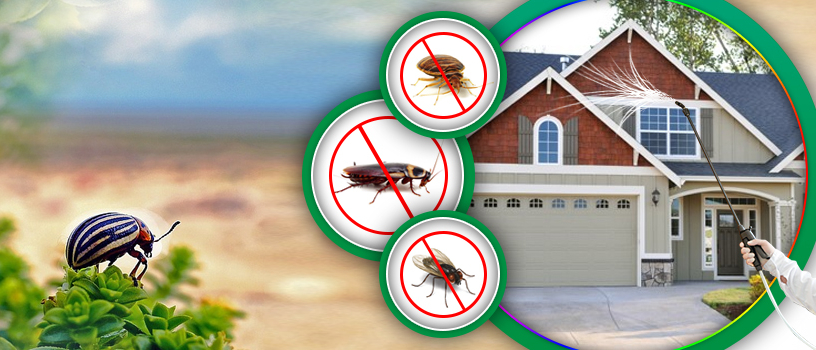Expert Parasite Control Techniques for Long-Term Outcomes
In the realm of pest control, achieving sustained efficacy and long-term results requires a careful technique that goes beyond mere extermination. Specialist pest control strategies envelop a comprehensive strategy that begins with a complete examination and evaluation, complied with by specific insect identification to understand their actions patterns. The execution of Integrated Parasite Monitoring (IPM) principles, coupled with eco-conscious treatments, forms the cornerstone of sustainable parasite obliteration. Nevertheless, truth test hinges on the recurring tracking and maintenance of the treated areas, guaranteeing a pest-free environment for the near future. By diving into the details of these methods, a much deeper understanding of specialist insect control methods for sustaining outcomes arises.
Assessment and Evaluation
Upon getting in a building for insect control solutions, the initial step is a thorough evaluation and assessment to determine the level of the infestation and figure out one of the most reliable treatment plan. Expert parasite control service technicians are educated to diligently examine the facilities, trying to find indicators of parasite activity such as droppings, nibble marks, nests, or any type of structural damages. They will certainly likewise analyze the problems that might be bring in pests, such as food sources, water leaks, or entry factors.

Insect Identification and Behavior

Furthermore, comprehending the habits of the determined insect is essential to executing efficient control steps. Understanding where bugs nest, what they feed on, and their task patterns can aid pest control specialists design approaches to remove them successfully.
Integrated Parasite Monitoring (IPM)
Integrated Parasite Monitoring (IPM) approaches incorporate numerous techniques to manage and stop pest invasions in a lasting and eco-friendly fashion. exterminator. By integrating techniques such as biological control, environment manipulation, adjustment of cultural techniques, and making use of resistant ranges, IPM intends to decrease using chemical pesticides
One of the essential principles of IPM is the focus on prevention. This positive method involves surveillance pest populations routinely to discover any kind of possible problems before they intensify. By recognizing parasite troubles at an early stage, pest control procedures can be carried out swiftly and properly.
Additionally, IPM advertises making use of safe pest control techniques whenever feasible. This can include using all-natural killers of the pests, introducing advantageous pests, or utilizing scents to disrupt mating patterns. By reducing reliance on chemical pesticides, IPM not just protects the setting yet likewise aids maintain a balance in the ecosystem.
Environmentally-Friendly Therapies
Executing eco-conscious strategies in bug control treatments can effectively resolve invasions while prioritizing ecological sustainability. Environmentally-friendly treatments focus on reducing the influence of insect control techniques on ecological communities, non-target microorganisms, and human health. These techniques commonly involve the usage of all-natural killers, such as ladybugs or nematodes, to manage pest populations, minimizing the need for chemical treatments. Additionally, methods like habitat control, such as adjusting moisture degrees or getting rid of food sources, can help deter parasites without using unsafe substances.
One more key aspect of environmentally-friendly therapies is making use of organic and naturally degradable items that break down swiftly without leaving hazardous residues in the atmosphere. Herb insecticides originated from plants like chrysanthemums or neem provide efficient bug control while posturing marginal threat to non-target types. Additionally, utilizing methods like heat treatments or pheromone traps can target certain bugs with accuracy, reducing the general ecological effect of insect control practices.
Ongoing Surveillance and Maintenance
Continuous monitoring and maintenance are necessary components of efficient parasite control administration. Recurring tracking plays an essential function in ensuring that bug infestations are found early and taken care of promptly. Regular inspections by experienced specialists are necessary to recognize any type of signs of insect task, examine the effectiveness of previous treatments, and make changes to the bug control strategy as required. By checking parasite populations in time, parasite control professionals can track fads, expect potential concerns, and execute safety nets to reduce the danger of future infestations.
In addition to surveillance, upkeep methods are vital for lasting bug control success. This includes executing proper hygiene steps to eliminate possible food and water resources for pests, sealing entry indicate stop insects from entering the premises, and dealing with any architectural concerns Pest control Washington DC that could help with pest infestations (Pest control Washington DC). By integrating continuous tracking and upkeep right into an integrated bug monitoring approach, services can make sure a pest-free environment and safeguard their home against costly damages and wellness dangers
Conclusion
In conclusion, utilizing professional pest control strategies such as comprehensive evaluation and evaluation, precise insect recognition and understanding of their behavior, integrated insect management methods, environmentally-friendly treatments, and recurring monitoring and maintenance are crucial for achieving long-lasting lead to insect control. By implementing these techniques, individuals can properly manage insect problems and keep a pest-free environment in a sustainable way.